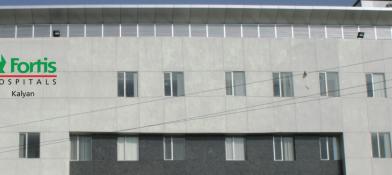Brachytherapy: A Guide to Internal Radiation Therapy
Brachytherapy is an advanced and highly targeted form of radiation therapy where a sealed radioactive source is placed directly inside or next to a tumor. The name originates from the Greek word brachys, which means short distance. This short-distance therapy is a cornerstone of modern cancer treatment, particularly for cancers of the prostate, cervix, breast, and skin, among others. Unlike traditional external beam radiation therapy EBRT, which delivers radiation from a machine outside the body, brachytherapy provides a concentrated dose of radiation from within. This internal approach allows for the delivery of a very high dose of radiation to the cancerous cells while significantly sparing the surrounding healthy organs and tissues from unnecessary exposure.
The precision of brachytherapy offers several key advantages, including the potential for shorter overall treatment times, fewer side effects, and excellent cure rates for many types of cancer. The procedure is meticulously planned by a multidisciplinary team of specialists, including a radiation oncologist, a medical physicist, and a dosimetrist, who use sophisticated imaging and computer software to create a highly personalized treatment plan.
This ensures that the radioactive sources are placed with millimeter accuracy to conform precisely to the shape and size of the tumor. For many patients, brachytherapy represents a powerful, effective, and less invasive path in their fight against cancer.
The Science: Understanding How Internal Radiation Works
Brachytherapy is a sophisticated application of physics and radiobiology, leveraging the properties of radioactive isotopes to destroy cancer cells with remarkable precision. The entire process is governed by fundamental scientific principles.
Radioactive Sources and Isotopes
Brachytherapy uses sealed radioactive isotopes as its treatment source. These are unstable atoms that naturally decay, releasing energy in the form of radiation. The isotopes are carefully selected based on the type of energy they emit and their rate of decay, known as a half-life. The most commonly used isotopes in modern brachytherapy include:
- Iridium-192 Ir-192
- Iodine-125 I-125
- Palladium-103 Pd-103
- Cesium-137 Cs-137
These isotopes are manufactured into tiny sources, often the size of a grain of rice, which are encapsulated in a non-radioactive metal like titanium to seal the radiation inside. This ensures the radioactive material itself does not travel through the body.
The Biological Effect of Radiation
The energy released by these sources damages the DNA of the cells closest to them. Cancer cells are particularly vulnerable to this type of damage because they divide rapidly and have a diminished ability to repair themselves compared to healthy cells. When the radiation damages a cancer cell's DNA beyond repair, the cell can no longer divide and grow, and it eventually dies. This process happens over time, and the tumor shrinks as the dead cancer cells are cleared away by the body.
The Inverse Square Law: The Key to Precision
The core principle that makes brachytherapy so effective at sparing healthy tissue is a fundamental law of physics called the inverse square law. This law states that the intensity of radiation decreases rapidly with distance from the source. Specifically, the dose of radiation is inversely proportional to the square of the distance from the source.
What this means in practice is that the radiation dose is extremely high right at the surface of the radioactive source and falls off very sharply just a few millimeters away. By placing the source directly inside or against the tumor, your radiation oncologist can deliver a lethal dose of radiation to the cancer cells while the dose received by nearby healthy organs like the bladder or rectum, which might be only a centimeter away, is significantly lower and much less likely to cause damage. This steep dose gradient is the defining advantage of brachytherapy.
Types of Brachytherapy
Brachytherapy can be classified in several ways, primarily based on the rate at which the radiation dose is delivered and the location where the sources are placed.
Classification by Dose Rate
- High-Dose-Rate HDR Brachytherapy: This is the most common form of temporary brachytherapy. It uses a single, highly radioactive source usually Iridium-192 that is robotically guided from a shielded machine called an afterloader. The source travels through pre-positioned applicators like catheters or needles to dwell at specific points within the treatment area for a few minutes at a time. The entire treatment is completed in a short session, typically 10-20 minutes, after which the source is retracted and the applicators are removed. HDR treatments are often given in a series of sessions, or fractions, over several days or weeks.
- Low-Dose-Rate LDR Brachytherapy: This technique involves placing radioactive sources, or seeds, that emit radiation at a much lower rate over a longer period. In many LDR procedures, such as for prostate cancer, the tiny seeds often Iodine-125 or Palladium-103 are permanently implanted in the tissue. They release their radiation gradually over several weeks or months, and their radioactivity decays to a negligible level over time. The seeds themselves remain in place permanently and are harmless.
- Pulsed-Dose-Rate PDR Brachytherapy: This is a hybrid approach that combines the biological advantages of LDR with the safety and control of HDR. It uses a source similar to HDR but delivers the radiation in a series of short pulses over a longer period typically 24-48 hours, simulating a low-dose-rate treatment while the patient stays in the hospital.
Classification by Placement
- Intracavitary Brachytherapy: The radioactive source is placed inside a body cavity where the tumor is located. This is very common in gynecological cancers. A special applicator is inserted into the vagina or uterus, and the radioactive source is delivered through this applicator.
- Interstitial Brachytherapy: The radioactive sources are placed directly into the tumor tissue itself. This involves the temporary or permanent placement of needles, catheters, or seeds. This technique is commonly used for prostate, breast, and head and neck cancers.
- Surface Contact Brachytherapy: The radioactive source is placed in a custom-molded applicator that sits directly on the surface of the body. This is used to treat non-melanoma skin cancers or other surface lesions, delivering a high dose to the skin while sparing the underlying tissues.
When is Brachytherapy Recommended?
Brachytherapy is a highly effective treatment, used either alone or in combination with other therapies like external beam radiation and chemotherapy, for a wide range of cancers.
- Prostate Cancer: Brachytherapy is a standard and highly successful treatment option for localized prostate cancer. It can be given as LDR permanent seed implantation, where about 80-120 tiny seeds are placed in the prostate, or as HDR temporary brachytherapy, often used as a boost in combination with external radiation for more advanced tumors.
- Cervical Cancer: Brachytherapy is an essential and often curative component of treatment for locally advanced cervical cancer. It is typically given as HDR intracavitary brachytherapy after a course of external beam radiation to deliver a final, highly concentrated dose directly to the cervix.
- Endometrial Uterine Cancer: After a hysterectomy for endometrial cancer, HDR vaginal vault brachytherapy is frequently used. A cylindrical applicator is placed in the vagina to deliver radiation to the top of the vagina, which is the most common site of recurrence. This significantly reduces the risk of the cancer coming back.
- Breast Cancer: Brachytherapy can be used as a form of Accelerated Partial Breast Irradiation APBI for certain women with early-stage breast cancer after a lumpectomy. This involves placing a device with multiple catheters into the surgical cavity and delivering radiation over a much shorter course typically one week compared to traditional whole-breast radiation.
- Skin Cancer: For non-melanoma skin cancers like basal cell or squamous cell carcinoma, HDR surface brachytherapy is an excellent non-surgical option that provides outstanding cosmetic results.
- Other Cancers: Brachytherapy is also a valuable treatment modality for certain head and neck cancers, esophageal cancer, and cancers of the bile duct, among others.
Our Specialists
A brachytherapy procedure is a highly complex process that requires the coordinated expertise of a dedicated, multidisciplinary team.
Dr. Mohit Agarwal
PRINCIPAL DIRECTOR & HEAD MEDICAL ONCOLOGY | Fortis Shalimar Bagh
Dr. Niti Raizada
PRINCIPAL DIRECTOR MEDICAL ONCOLOGY | Fortis BG Road
Dr. Pradeep Kumar Jain
CHAIRMAN – GI, GI ONCOLOGY, MINIMAL ACCESS & BARIATRIC SURGERY | Fortis Shalimar Bagh
Patient Stories
"When I was diagnosed with prostate cancer, my oncologist presented me with several options. I chose LDR brachytherapy, the permanent seed implant, because it was a one-time procedure with a quick recovery. The planning process was incredibly detailed. The procedure itself was done under anesthesia, and I went home the same day. I had some temporary urinary side effects, but they were well-managed. Years later, my PSA is undetectable, and I've maintained my quality of life. It felt like a very precise, modern way to deal with cancer." - Alok Sharma, 66, Delhi
"As part of my treatment for cervical cancer, I had to undergo HDR brachytherapy after my external radiation was complete. I was very anxious about the idea of internal radiation. The radiation oncology team at Fortis was amazing; the nurses and doctors explained every step and made sure I was comfortable. The applicator placement was done with sedation, and the actual radiation treatment was completely painless and lasted only about 15 minutes. Knowing that this final step was delivering such a powerful, targeted dose to kill any remaining cancer cells gave me a real sense of hope." - Priya Singh, 45, Gurugram
The Brachytherapy Procedure: A Detailed Walkthrough
The patient journey for brachytherapy is a meticulously planned, multi-step process.
Step 1: The Consultation and Planning Simulation
Your journey begins with a detailed consultation with a radiation oncologist. If brachytherapy is deemed the right treatment for you, you will undergo a planning session called a simulation.
- Imaging: A high-resolution CT scan or MRI of the treatment area will be performed.
- Treatment Planning: The images are loaded into a sophisticated, 3D treatment planning computer. The radiation oncologist, along with a medical physicist, will precisely delineate the tumor the target volume and the surrounding healthy organs that need to be protected. The physicist then uses the software to calculate the exact placement, dwell times, and strength of the radioactive sources needed to deliver the prescribed dose to the tumor while minimizing the dose to adjacent tissues.
Step 2: Applicator Placement
This is the step where the device that will hold the radioactive sources is positioned. This may be done just before the treatment or sometimes a day or two earlier.
- Anesthesia: Depending on the type and location of the cancer, this is often done in an operating theatre under general, spinal, or conscious sedation to ensure you are completely comfortable.
- Placement: The radiation oncologist will place the applicator e.g., a vaginal cylinder for endometrial cancer, catheters in the breast, or needles in the prostate using imaging guidance like ultrasound or CT to ensure perfect positioning.
Step 3: Treatment Delivery
- For HDR Brachytherapy: You will be taken to a special, shielded treatment room. The applicator is connected via transfer tubes to the HDR afterloader machine, which houses the single radioactive source. The medical team will leave the room, but they will be monitoring you constantly on video and can speak to you through an intercom. The computer-controlled afterloader then robotically sends the source to the planned positions within the applicator for the calculated amount of time. The treatment is completely silent and painless. Once complete, the source retracts, and the applicator is removed.
- For LDR Brachytherapy: The radioactive seeds are implanted during a surgical procedure. Once they are placed, the procedure is complete. The seeds begin delivering their low dose of radiation immediately and continue to do so over several months as their radioactivity naturally decays.
After the Procedure: Recovery and Follow-Up
- For HDR Brachytherapy: If the applicator was placed under sedation, you will be monitored in a recovery area until you are awake. Most HDR treatments are done on an outpatient basis. You may feel some local tenderness, but you can typically resume normal activities quickly.
- For LDR Brachytherapy: You will recover from the anesthesia and are usually discharged the same or the next day. You will be given specific radiation safety precautions to follow for a short period, such as avoiding very close contact with pregnant women or small children while the seeds are most active.
- Side Effects: Side effects are usually localized to the area being treated. For example, prostate brachytherapy may cause temporary urinary irritation, and cervical brachytherapy can cause temporary vaginal irritation. Your doctor will provide medication and guidance to manage these effectively.
- Follow-Up: You will have regular follow-up appointments with your radiation oncologist to monitor your recovery and the success of the treatment.
Myths vs Facts
Take the Next Step
Brachytherapy represents a remarkable fusion of medicine, physics, and technology, offering a powerful and precise weapon in the fight against cancer. By delivering treatment from the inside out, it provides a unique advantage in targeting tumors while protecting your overall health.
If you or a loved one has been diagnosed with a cancer for which brachytherapy is an option, a detailed discussion with a radiation oncologist is the best way to understand its potential role in your treatment journey. Our team of experts is here to provide you with a comprehensive evaluation and a personalized, state-of-the-art care plan.
CTA: Book a Radiation Oncology Consultation / Get a Second Opinion
Frequently Asked Questions
Q1. What are the main benefits of brachytherapy?
Ans. The primary benefits are its high precision, which allows a very high dose of radiation to be delivered directly to the tumor, and its ability to spare surrounding healthy tissues from significant radiation exposure. This often results in fewer side effects and shorter overall treatment courses compared to external radiation alone.
Q2. Is the applicator placement procedure painful?
Ans. The placement of the brachytherapy applicator is performed under anesthesia general, spinal, or conscious sedation. This is done specifically to ensure that you are comfortable and do not experience pain during this part of the process.
Q3. How long will I need to stay in the hospital?
Ans. This depends on the type of brachytherapy. Most HDR treatments are performed on an outpatient basis, and you can go home the same day. For an LDR permanent seed implant for prostate cancer, you may stay overnight for observation.
Q4. Will I lose my hair?
Ans. No. Hair loss from radiation therapy only occurs when the hair follicles on the scalp are directly in the radiation field. Since brachytherapy is a localized, internal treatment, it does not cause systemic side effects like generalized hair loss.
Q5. What are the radiation safety precautions after a permanent seed implant?
Ans. The radiation from LDR seeds is very low energy and does not travel far. For the first one to two months, you will be given simple precautions, such as not allowing small children or pregnant women to sit on your lap for extended periods. Normal daily contact with adults is perfectly safe.
Q6. How do I know if the treatment has worked?
Ans. The success of the treatment is monitored over time through follow-up appointments with your doctor. This will involve physical examinations, blood tests like the PSA test for prostate cancer, and imaging studies like CT, MRI, or PET scans to check the response of the tumor.
Q7. Is brachytherapy an option for all types of cancer?
Ans. No, brachytherapy is not suitable for all cancers. It is most effective for cancers that are well-defined, localized, and accessible for the placement of an applicator or sources. It is not used for cancers that have widely metastasized.
Q8. Can brachytherapy be used after surgery?
Ans. Yes, it is very commonly used in the adjuvant setting, meaning after surgery, to reduce the risk of the cancer recurring at the surgical site. A prime example is vaginal vault brachytherapy after a hysterectomy for endometrial cancer.

























